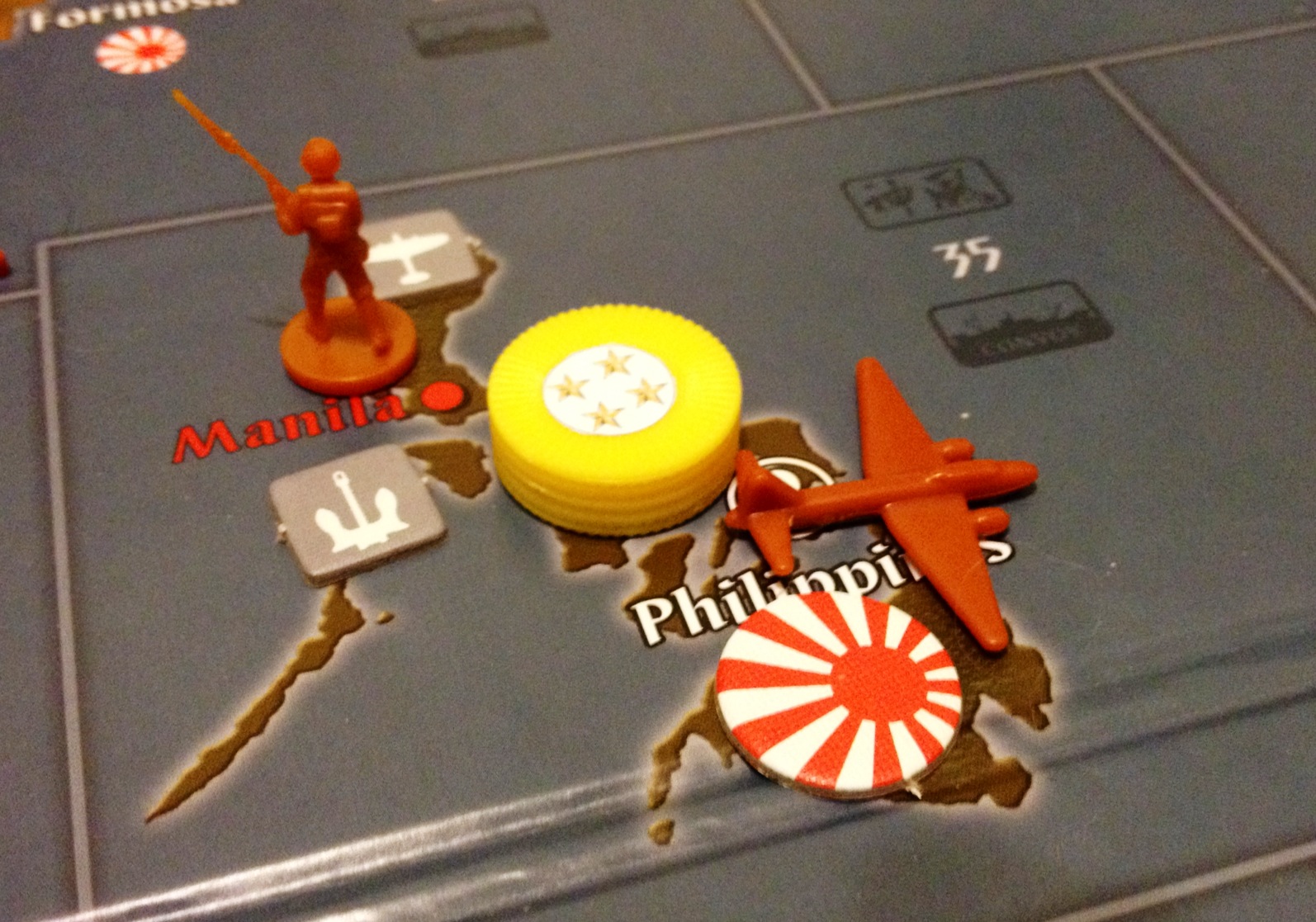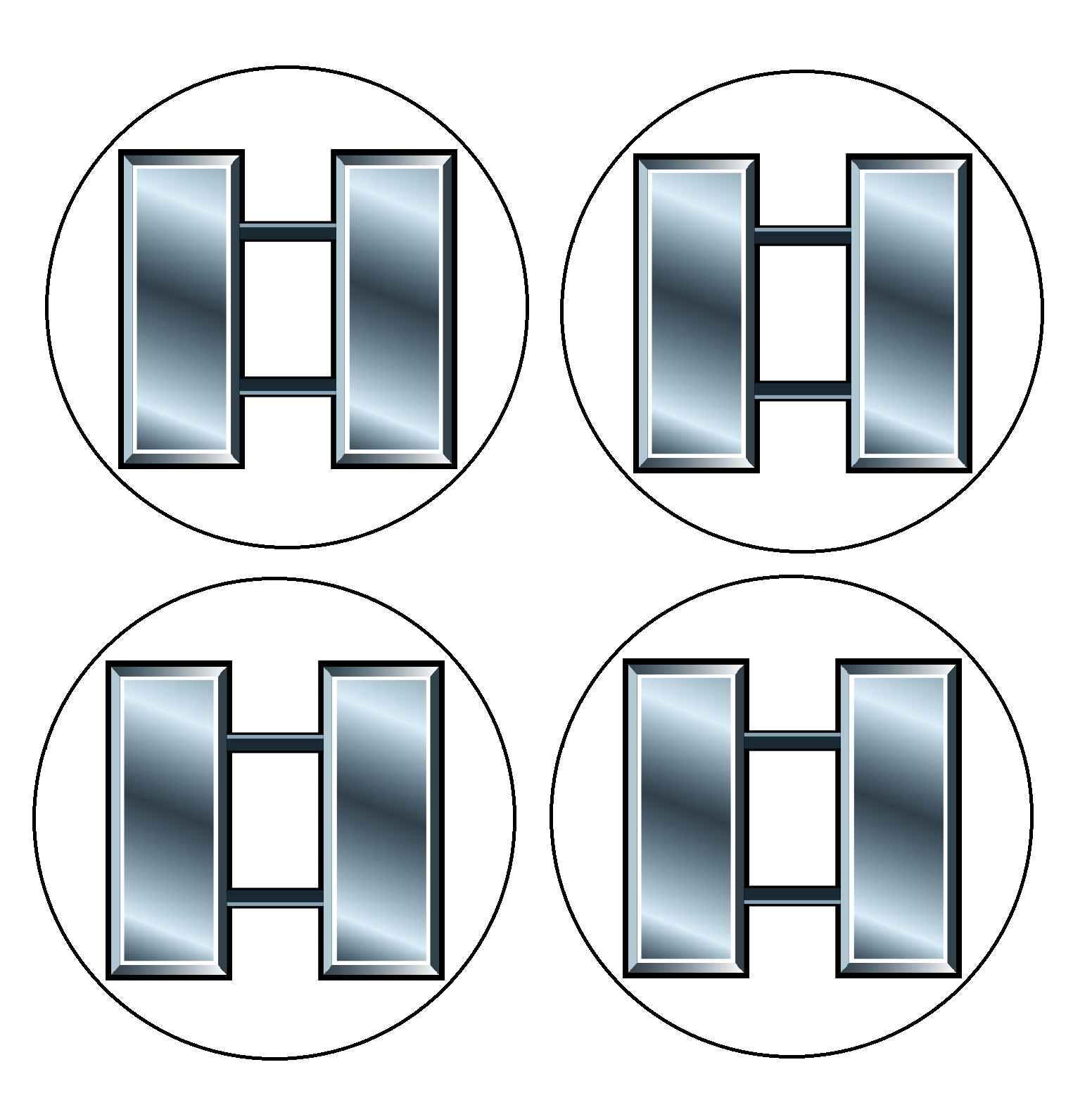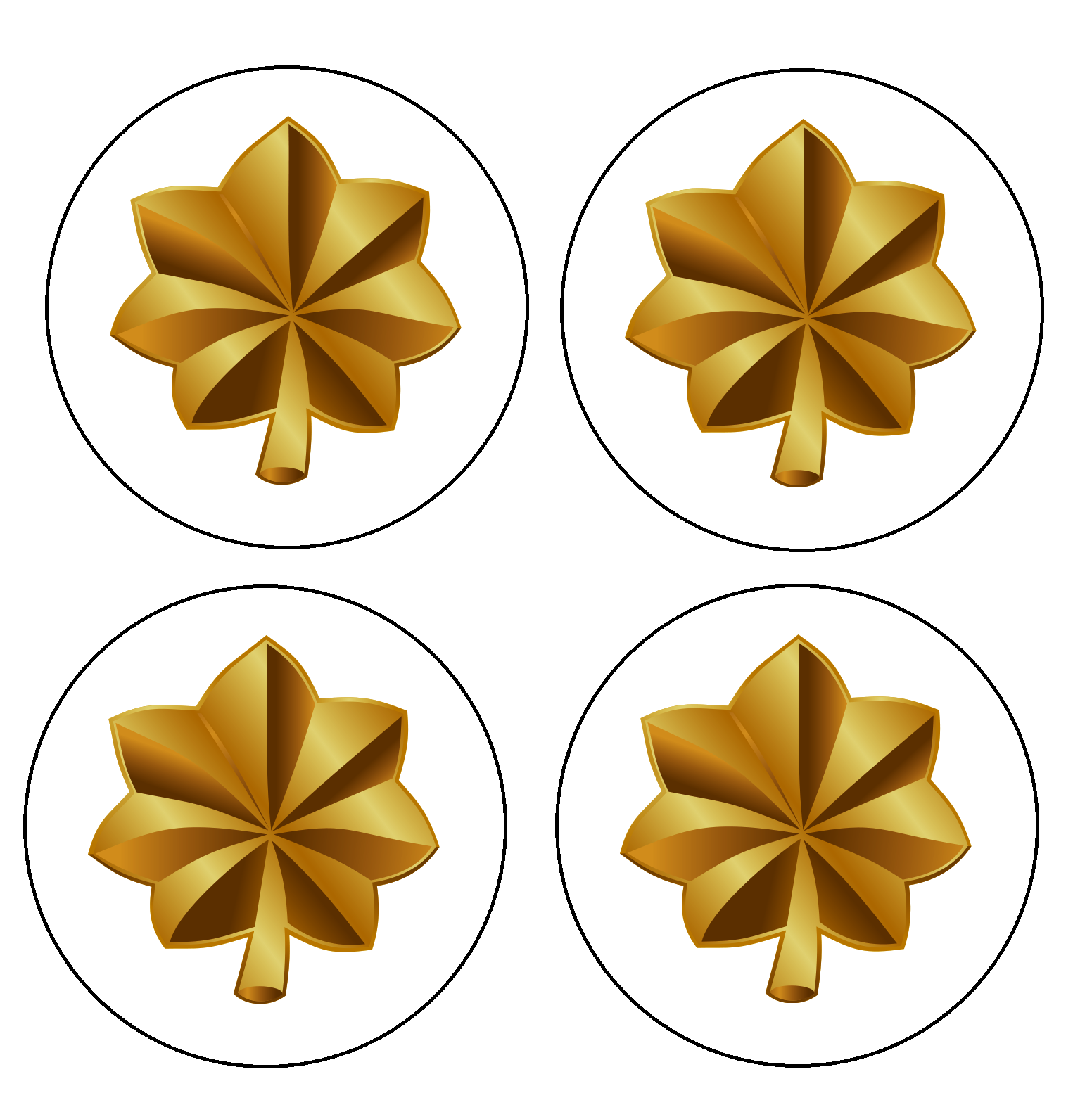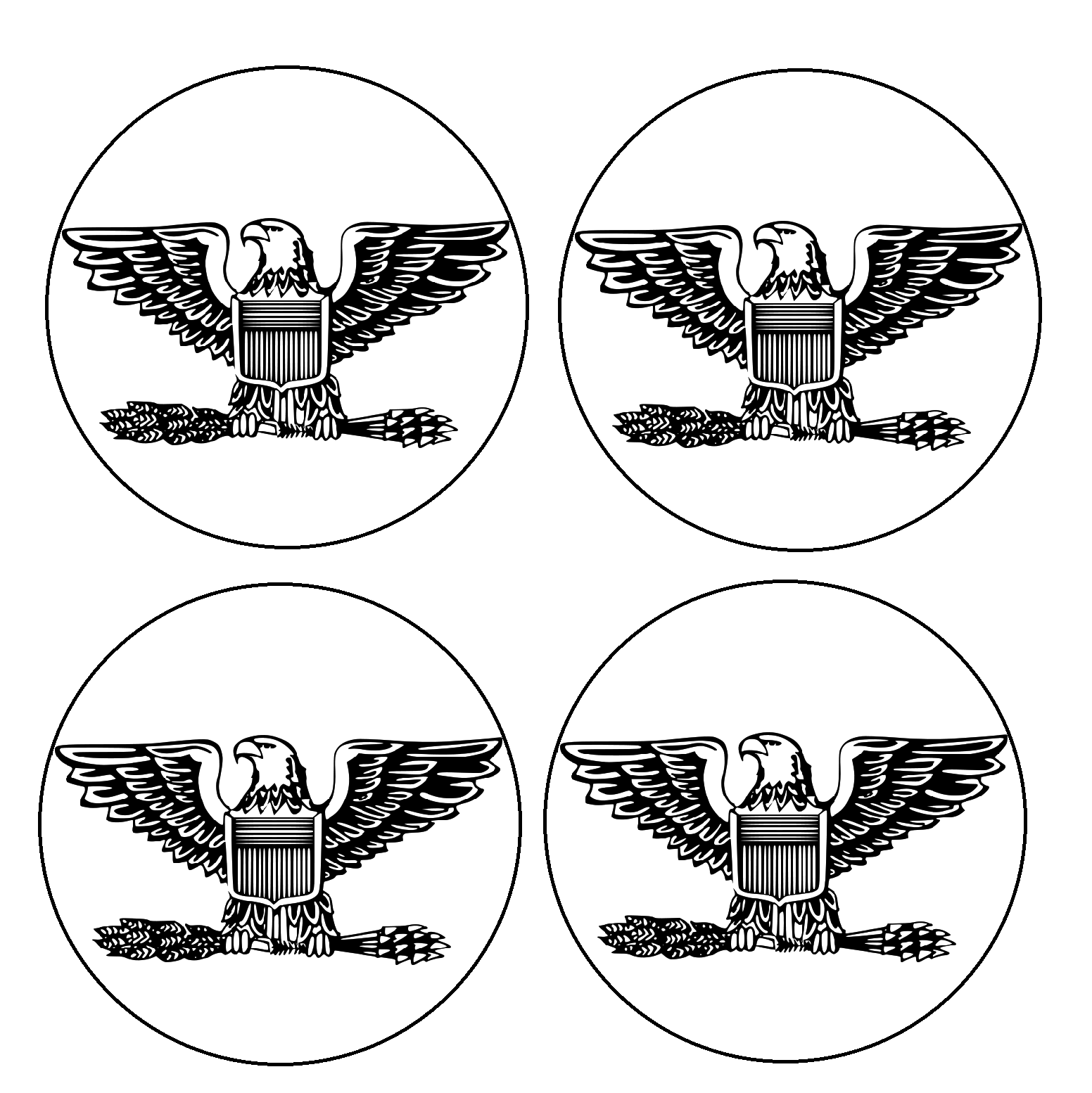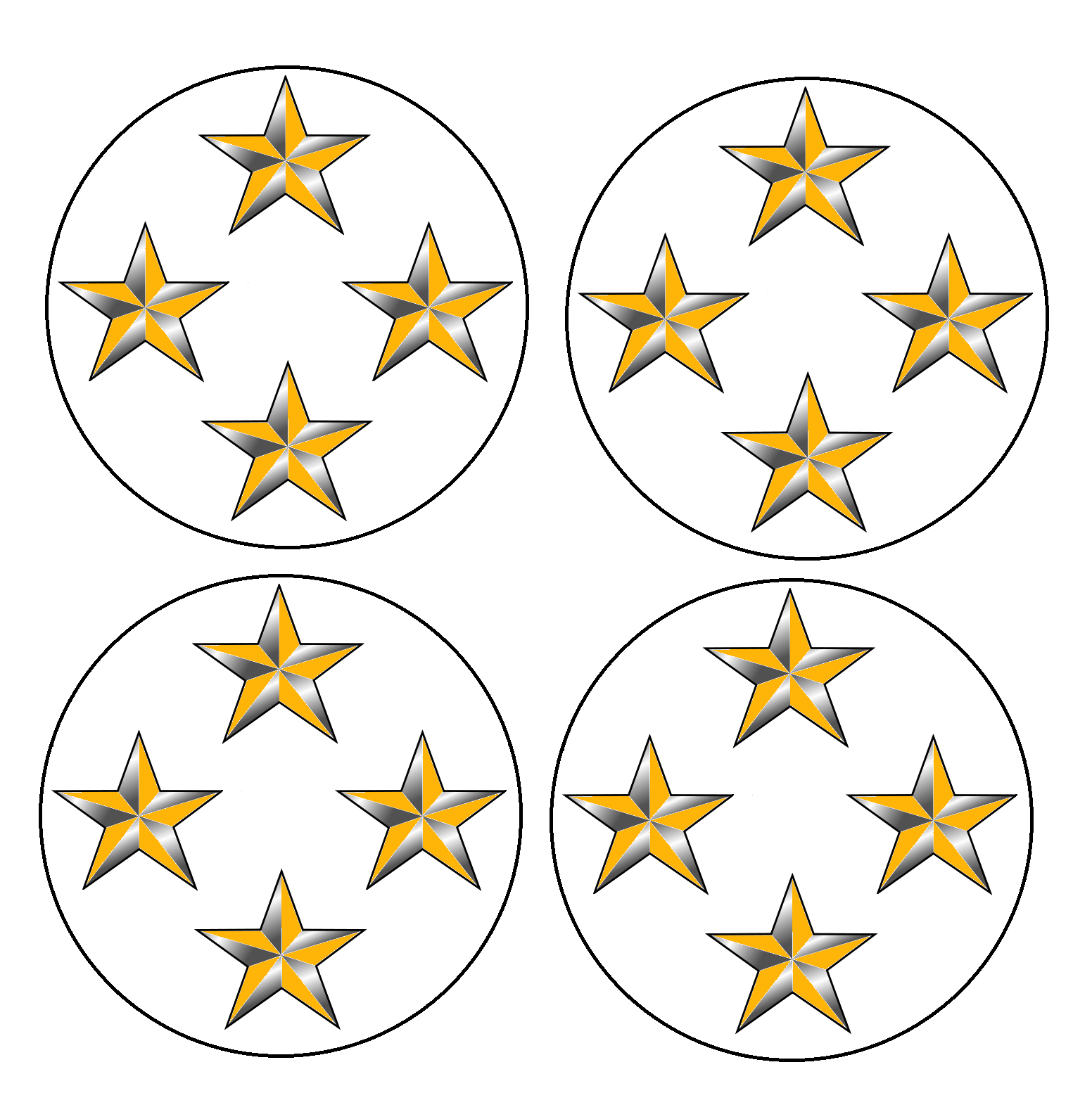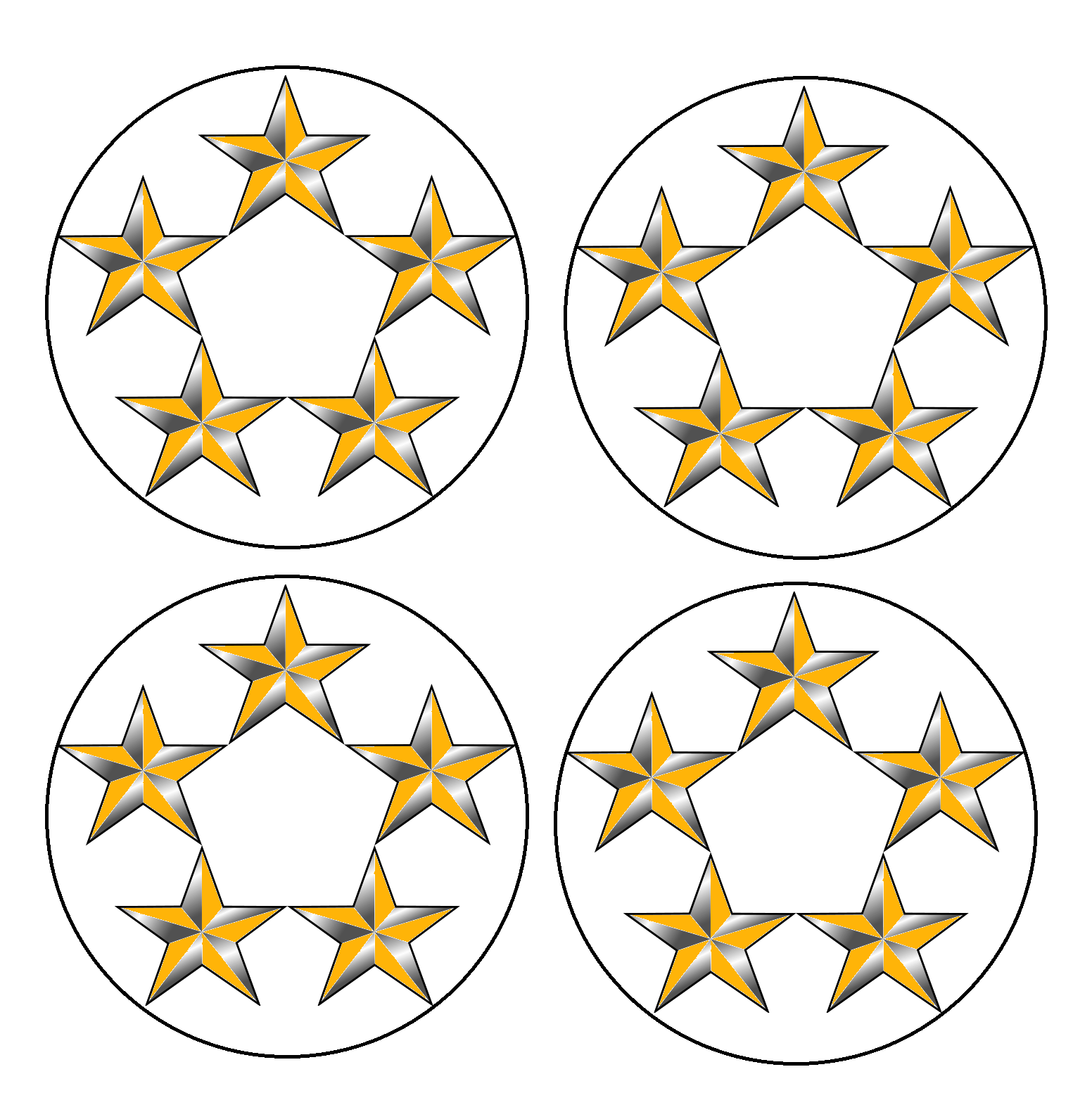These are house rules I created for representing officers in Axis & Allies. I currently use printed tokens placed on yellow poker chips (same size as regular A&A chips, found on HBG; see attached picture), I hope to have custom printed roundels in the near future.
Officer Tokens
Officer tokens represent distinguished officers on the battlefield. They can range from Captains to 6-star generals, but they by no means are meant to represent the entire chain of command. These are officers that have proven their bravery or skill somehow, and therefore impart bonuses to the troops under their command.
Zones of Influence
Each officer can affect a certain number of zones around them. Officers below the rank of General/Admiral (1 star) can only impart bonuses to the troops in the zone they occupy. 1-star Generals/Admirals may impart bonuses to their zone and all adjacent zones. 2-stars affect all adjacent zones two zones away, and so on.
In general, land officers may only affect land zones and naval officers may only affect sea zones. Land officers� zone of influence may extend over bodies of water, however, and similarly for naval units. The sea (or land) zone is counted as one of their adjacent zone limits. So, for instance, a 2-star general in England could affect units in Normandy, but not France. Also, no more than two sea zones or 1 land zone may be bridged by a zone of influence.
Command Points
Officer bonuses take the form of command points, which represent re-rolls during combat. Each rank gets a number of re-rolls (see chart below). When an officer is created or promoted, place the corresponding number of gold chips under the officer�s chip. These chips are then allocated as the player sees fit, representing one re-roll the player may use during any combat roll. Once the re-roll is used, it is consumed and removed from the battle board.
Ranks
The ranks are:
| Army Rank | Navy Rank | Insignia |Zones of Inf| Re-rolls |Creation Roll |
| Captain | Lieutenant | 2 silver bars | Local | 1 | 1 |
| Major | Lt. Commander | Oak Leaf Cluster | Local | 2 | 2 |
| Colonel | Captain | Eagle | Local | 3 | 3 |
| Brigadier Gen. | Rear Admiral (Lower) | 1-Stars | Local +1 | 1 | 4 |
| Major General | Rear Admiral (Upper) | 2-Stars | Local +2 | 2 | 5 |
| Lt. General | Vice Admiral | 3-Stars | Local +3 | 3 | 6 |
| General | Admiral | 4-Stars | Local +4 | 4 | N/A |
| Gen. of the Army | Adm. of the Navy | 5-Stars | Local +5 | 5 | N/A |
|Gen. of the Armies| Adm. of the Navies | 6-Stars | Local +6 | 6 | N/A |
Allocating Points/Movement
Before the beginning of the conduct combat phase, allocate attacking player�s officers’ command points to whichever battles the player so chooses. Remember that officers below the rank of general are limited to the battle in the zone they occupy, so no allocation is necessary. After the attacker has allocated his points, the defender may do so as well, placing chips in the combat areas. Be careful not to mix or mis-allocate chips.
If a defending zone contains units from multiple nations, all defenders can allocate command points. However, only the attacking player may allocate points, not their allies.
Officers may move one zone in the combat move or non-combat move phases, but they may not make a move that would initiate combat by themselves. They may also move in the non-combat move phase from a zone with an airbase to another friendly zone with an airbase within 7 spaces (bomber movement range).
After a battle is complete, move all command points back to its parent officer. They will then be available for use in the player�s next turn or if the player comes under attack in another player�s turn.
Officer Defeat
If all friendly units in a battle in a zone with an officer are destroyed (attacking or defending), the officer�s player must roll a D6 to determine what happens to the officer.
1-2: Withdrawal - the officer retreats to an adjacent friendly zone. If none exist, the officer is killed. Naval officers must retreat to an adjacent sea zone with friendly ships.
3-4: Capture - the enemy player takes the officer hostage, and can offer them in exchange to the player for an officer of theirs. See P.O.W. Camps below.
5-6: Death (in battle or suicide) - the officer is destroyed and removed from the board.
P.O.W. Camps
When an officer is captured, the capturing player will take the officer token, place a token of the officer�s nation (to remind players where the officer came from) on top of the officer token, and place the tokens in any of the capturing player�s zones. The capturing player will then create a single infantry unit (for free) and place it on the stacked tokens. This represents a P.O.W. camp. It is advisable to place the camp far from the front lines, as if this zone is captured by the enemy, the officer(s) within will be freed.
If more enemy officers are captured, simply place them in the stack under their national marker. If officers from multiple nations are captured, feel free to place multiple markers in the stack. Players are free to create up to 3 P.O.W. camps (one per zone) if necessary (moving front lines, etc.), and officers may be moved from camp to camp (during non-combat), but once a camp is created, it must have at least one officer in it.
P.O.W. camp guards (infantry unit) may participate in battle if necessary, but if they vacate a zone or are destroyed while defending, all officers within a camp are freed.
Officer Creation/Promotion (Working)
At the beginning of the game, there are no officers on the board, as there have been no opportunities to prove their bravery or skill in battle. Certain criteria have to be met for an officer to be recognized as exemplary. When a requirement from the list below is met, an officer may be created or receive a promotion. For creation, roll 2D6 and choose the lowest result. Place an officer marker for the rank that corresponds to the �Creation Roll� number in the table above in the zone where the criteria was met. For promotion, the officer need only contribute command points to the battle where the criteria was met. Note that only one promotion may result from criteria being met, and officer creation can only occur when no officers have allocated command points to a battle.
Criteria
-
Conquer a zone that completes a National Objective (N.O. must be met by the conquest and able to be collected at the end of turn).
-
Wipe out all enemy faction units of a single type (air, land or sea) within a two zone radius.
-
Defend or recapture a friendly or allied original border territory.
-
Conquer or defend a zone with an industrial complex, air base, or naval base.
-
(Naval) Assist in an amphibious assault that captures a zone with an industrial complex, air base, or naval base. Note: Must create or promote either a land officer or a sea officer in this case, not both.
-
Capture or defend a victory city.
-
Win a battle with >= 4 enemy units without any casualties.
The player may choose not to promote their officers as well. This particularly makes sense when doing so would cause an officer to become redundant, as explained in the overlapping zones of influence rules in the Distribution section below.
Distribution
There are some restrictions as to where officers may be effectively placed.
Overlapping Zones of Influence
If there is more than one general or non-general within a zone of influence, only one general and one non-general�s command points may be allocated to a specific battle. This means it may sometimes behoove the player to keep some of their officers at non-general ranks to get the maximum benefit from their chain of command.
5-Star and 6-Star Rules
In addition to limiting overlapping zones of influence, there can be no more than one 5-star general or admiral per nation in a theater (Europe, Pacific), and no more than one 6-star per nation. If a 4-star is eligible to be promoted, the promotion cannot take place if there is a friendly 5-star in the theater. Note: There can be both a 5-star general and a 5-star admiral in the same theater.
IF a general is promoted from 5-star to 6-star, he must be placed in the nation�s capital (or in a sea zone adjacent to the capital for naval officers) immediately, and must stay there for the duration of the game.
